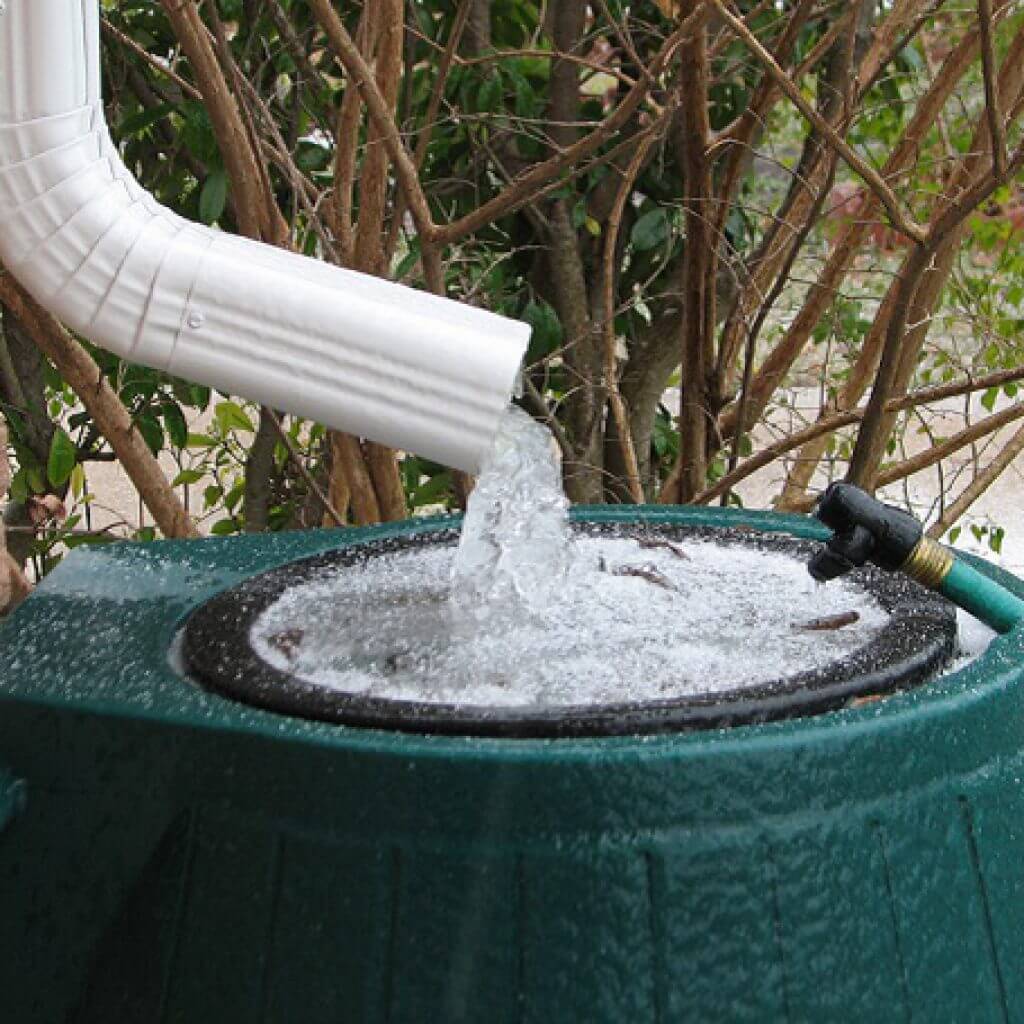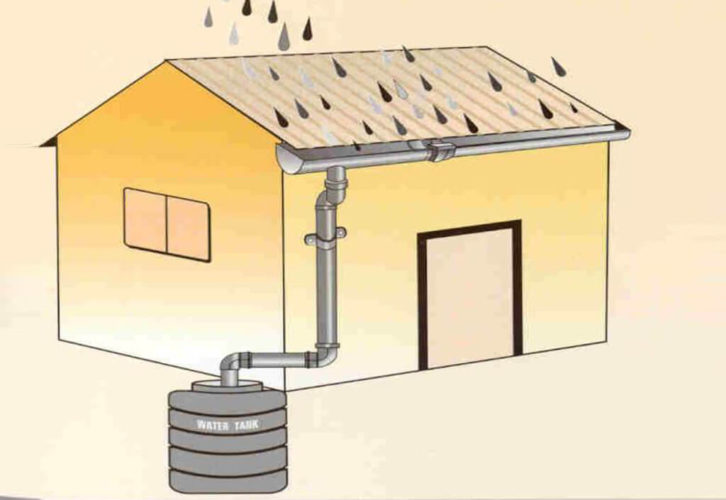Even with a strong borehole of good quality water (and therefore no reliance on expensive municipal supply) there are compelling reasons why harvesting rainwater from one’s roof may be a fruitful activity for a smallholder.
The Climate Crisis will affect rainfall and increase evaporation, which will put increasing pressures on our ecosystems.
The most obvious reason for harvesting rainwater, in any situation is, of course, that it is free ~ at least after the initial outlay on guttering, piping and tankage.
Another reason for harvesting rainwater is based on the fact that the quality of both our municipal and ground water supplies is directly impacted by the government’s ability to successfully manage our water infrastructure. There is concern that this infrastructure has not been maintained as well as it should have been and that the quality and availability of water in the future is not secure.
At a more practical level, if your borehole pump breaks down or is stolen, at least you will have back up water until you can repair or replace it.
But the most convincing reason why a smallholder should consider rainwater harvesting is the relative ease with which a meaningful volume of water can be trapped. Our roofs tend to be larger than urban houses (even if our houses are the same size there’s often an outbuilding roof that can be set up for rainwater collection). And the size of our properties makes it easy to use cheap, large tanks connected in series to maximise one’s harvest.

But there’s another less obvious reason which will appeal to those who have water hardness problems with their borehole supply: clean rainwater is about as soft a water supply as one can get.
Calculating rainfall and rain harvesting figures are related. For rainfall, the calculation is one millimetre of rain equates to the amount of rainfall necessary to cover a 1m2 surface to a depth of 1mm, which is one litre of water.
Compare this to what happens on a roof. Proponents of rainwater harvesting calculate that off a 100m2 iron roof one will harvest 1 000 litres of water for every eleven millimetres of rainfall. There are a couple of factors that will affect this figure, of course, notably the pitch of the roof, the angle at which the rain is driven by wind as it falls, as well as the type of roofing material.
There are ways to ensure that the water one stores is clean, but the easiest is to buy a filtration device through which all the water passes before entering the storage tank.
And so, let’s do some sums to see how much rainwater you can store in any one season, and therefore, how much tankage you will require.
Assume you can find 100m2 of relatively flat roof that can be fitted with guttering and then look at your annual rainfall figures. While figures vary from area to area and from year to year, let’s assume a reasonable average of 800mm of precipitation a year. On the face of it, 800mm should yield nearly 73 000 litres of harvestable rainwater.
But, of course it won’t because a total of 800mm does not (thankfully) all fall at once. The number of times one receives rainfall of ten or more millimetres a season is relatively small.
In our example, with a ten litre bypass filter one is losing from one’s harvest the first ten litres of any shower. And a shower of 1mm is going to yield less than 100 litres, minus the loss in one’s bypass system … say ten litres. So from a 1mm shower one should harvest about 80 litres of water: about enough to flush an eight-litre toilet ten times.
So, let’s look at it from the other end of the equation ~ tank capacity. On a smallholding you could run your rainwater into a large concrete or corrugated iron dam, but that would require some form of covering to protect the quality of the water.
More likely you will run your water into one or more freestanding fibreglass or plastic tanks such as those manufactured by Rototank or Jojo. And here, because of our large gardens, we smallholders have an advantage over our suburban cousins because we are not limited by the size of our properties. In reality this means we can (or should) opt for 5 000 litre tanks, possibly even coupled two or three at a time.
But let’s assume we have only one 5 000 litre tank connected to our 100m2 roof. Three good rainy days, yielding a total of, say 52-55mm, will fill the tank to the brim. But how many such spells does one enjoy per rainy season? Three or four, maximum.
So how much tankage is enough? Another way of looking at it is to acknowledge that most of SA receives its rain in a season of, roughly, six months, with the remaining six months of winter being, effectively, rainless. So one really only needs to provide storage capacity to see one through the dry season. Assuming one is going to consume one’s harvested water at 190 litres a day, one only needs 35 000 litres of storage capacity, or seven 5 000 litre tanks.
190 Litres a day is not enough to run a smallholding, but is enough to make a difference in both your water bill and your water footprint.

